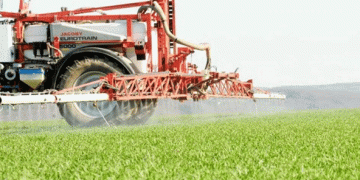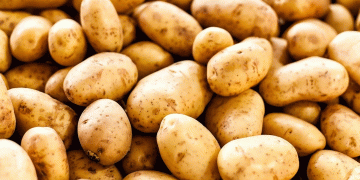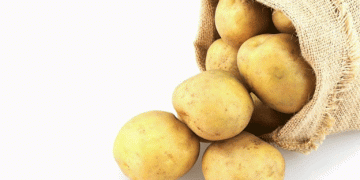Many things can happen to potatoes during a long storage season, almost all of which are detrimental to quality. Often you get some kind of warning and you can actually see or smell that something is going amiss in your cellar. Unfortunately, one problem that is apparent only after the potatoes are unloaded is pressure bruise.
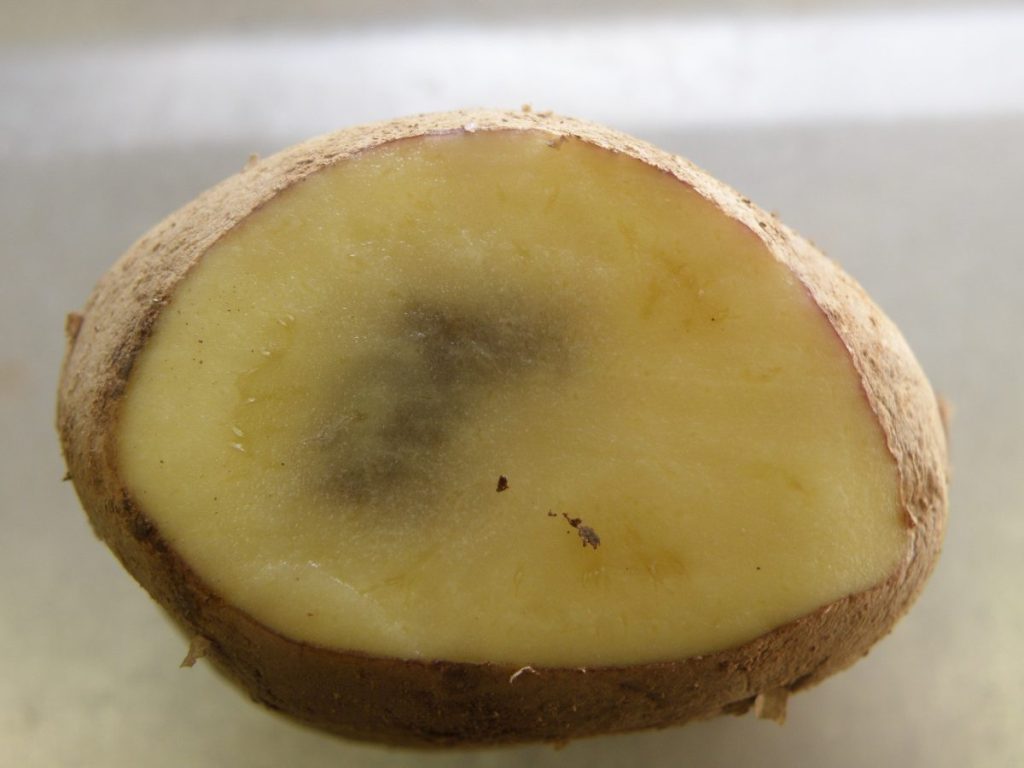
Pressure bruise typically shows up in the lower portion of the pile and can give a flattened look to the tuber surface that is often accompanied by a gray/black colored internal defect. Pressure bruise occurs due to weight loss from the potato in combination with pressure or force from other surfaces (e.g. other potatoes, side-walls).
There are many factors that can make potatoes more susceptible to pressure bruise. First, the state of the potato going into storage will influence how the potato responds to the storage environment. Potatoes that are flaccid, wounded, immature, or harvested with high pulp temperatures are more prone to weight loss and thus pressure bruise. In general, immature potatoes are 10-60 times more likely to lose weight compared to a mature potato. A wounded potato will lose up to 1000 times more water than a nonwounded potato prior to completion of the wound layer formation.
Certain cultivars, especially potatoes with low solids, are also more prone to pressure bruise such as ‘Russet Norkotah’ and red potatoes. Take extra precautions when storing these types of potatoes. Some of the major storage components of pressure bruise development are based upon temperature and humidity and thus the water vapor pressure deficit (VPD) between the tuber and the surrounding air. The duration at which the tubers are exposed to a particular VPD, and pile height will also influence pressure bruise development. The larger the VPD, the greater the water loss will be from the potato. Weight loss is much more significant in the first month in storage.
Research has shown that once that initial pressure bruise begins, it will continue to worsen over several days with a three-fold rate of water loss through that bruise. Therefore early management for pressure bruise is important. Below is a list of storage management suggestions to reduce the potential of pressure bruise development.
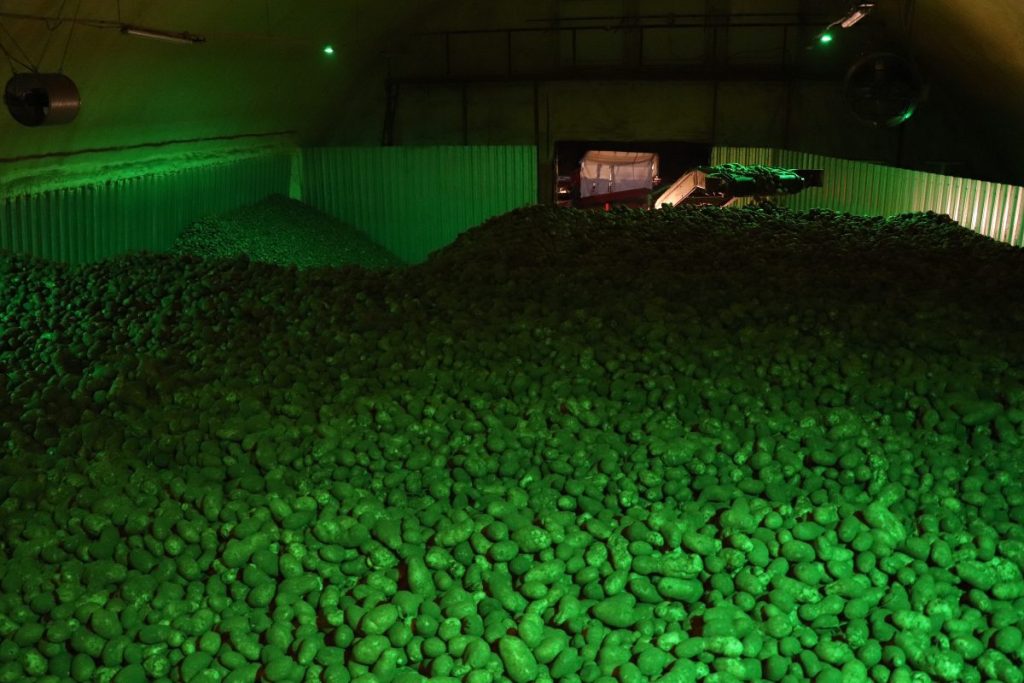
- Pre-wet cellar floors prior to filling.
- Pile potatoes at the lowest feasible pile height (18 feet or less).
- Supply air and humidity to the potato pile when filling the storage after the first 2-3 ducts are covered.
- Measure pulp temperatures of loads coming into the storage throughout the day. Set the storage temperature to 1-2 degrees below the coolest pulp temperatures from that day. This will avoid condensation on those potatoes as well as enable maximization of cooling time. Continue until your curing temperatures are reached, but also factor in this time as part of the wound healing period. This recommendation is assuming the potatoes are coming in early out of the field at warmer pulp temperatures.
- Wound heal for 2 weeks at 50ºF. Cure longer if potatoes were immature or severely wounded or bruised.
- If storing fresh pack potatoes, ramp down fairly rapidly (0.5ºF/day or less) to the final holding temperature as long as the tubers were adequately wound healed.
This faster rate will minimize the total water loss from the potatoes. Rapid temperature ramping is not an option for process potatoes. - Hold potatoes at temperatures recommended for the end-use. Cooler temperatures (40-45ºF) will minimize weight loss. Maintain a 1-2ºF differential between the top and bottom of the pile.
- Humidity above 95% is preferred. Always humidify fresh air.
- Maintain adequate sprout control. Apply a sprout inhibitor in a timely manner depending upon past experience with the cultivar, crop, and growing and storage
environments.


